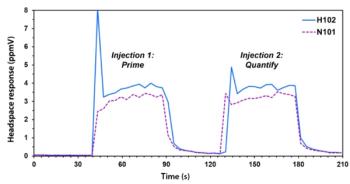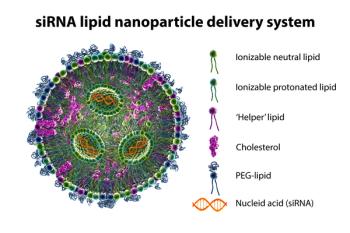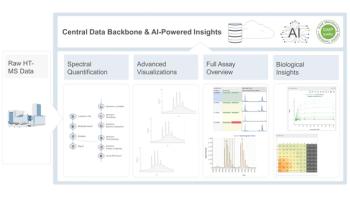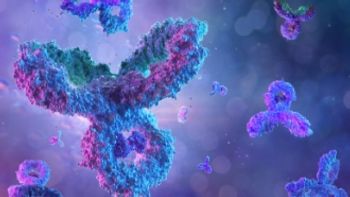
Best of the Week: GC-MS Analysis of PFAS, Inside the Gionfriddo Lab
Here are the top five articles that the editors of LCGC International published this week.
This week, LCGC International published a variety of articles on the hottest topics in chromatography and beyond. Below, we’ve highlighted some of the most popular articles, according to our readers. Happy reading!
Will Wetzel
In this installment of “Inside the Laboratory,” we look at the Gionfriddo Laboratory at the University at Buffalo. Dedicated to making new findings and technologies for separation, preconcentration, and micropollutant detection in complex samples, the group explores questions about the distribution and partitioning of micropollutants in the environment and biological systems using microseparations for preconcentration and mass spectrometry (MS) for structural identification and detection at ultra-trace levels. The laboratory, which hopes to better understand routes of exposure and the effects of xenobiotics in living system, uses miniaturized extraction methodologies in its research, including solid-phase microextraction (SPME), coupled to gas chromatography (GC) and liquid chromatography (LC), or in conjunction with mass spectrometry (MS). Emanuela Gionfriddo, who is the lead investigator, recently sat down with LCGC International to discuss her group’s work in understanding environmental pollutants distribution in biological and environmental samples, as well as the transition of relocating her analytical laboratory from Toledo, Ohio, to Buffalo, New York.
John Chasse
Determining chemical components that can make up a fragrance sample is important for many tasks, including reformulation, which involves determining the identification and relative amounts of components in a sample. It is impractical to quantify and calibrate fragrance components using reference standards, so scientists have begun using workflows to achieve fragrance analysis use mass spectrometry (MS) for identification with a flame ionization detector (FID) for relative area percent quantification. At Pittcon 2024, Elizabeth Humston-Fulmer of LECO Corporation presented an improved workflow which uses two-dimensional gas chromatography (GCxGC) with dual time of flight (TOF) MS/FID detection. According to her, this process yields reliable identification and area percent qualification using a single injection rather than multiple injections. After Pittcon, Humston-Fulmer discussed this analytical method with us.
Will Wetzel
Earth Day, which is celebrated annually on April 22, is meant to celebrate and raise awareness about environmental sustainability and preserving Earth for future generations. This day is meant to raise awareness about environmental issues such as climate change, deforestation, and pollution, while empowering people globally to understand the impact of their actions on the environment and empower people across the world to take steps to help preserve the planet. This year, LCGC International will host a one-day, online content series on environmental analysis, where we will discuss the crucial role chromatography plays in environmental analysis by sharing different interviews and technical and feature articles that show the impact of chromatography on environmental analysis and sustainability efforts. We look forward to celebrating Earth Day with our readers!
Patrick Lavery
Per- and polyfluoroalkyl substances (PFAS) are used to make fluoropolymer coatings that can be found in products ranging from clothing to adhesives to food packaging to electrical wire insulation. However, these chemicals can bioaccumulate in fish, wildlife, and water, which can eventually accumulate in humans that consume these contaminated sources. In a recent study published in the journal Toxins, scientists proposed targeted methods developed using gas chromatography coupled to tandem mass spectrometry (GC–MS/MS), which were used to measure human plasma protein binding and hepatocyte clearance in a group of 73 PFAS substances. The in vitro toxicokinetic (TK) information sought by the seven researchers behind the study, most of whom are affiliated with the U.S. Environmental Protection Agency (EPA), may close gaps in TK or toxicologic knowledge that could signal the environmental fates of some of these PFAS regarding their metabolism, volatility, or other modes of transport.
Aaron Acevedo
Joycelyn Tan, a PhD candidate at the University of Cambridge, in the U.K., has recently been named the 2024 recipient of the Darlene Solomon Award, which is co-sponsored by Females in Mass Spectrometry (FeMS) and Agilent Technologies. This award was created to promote (MS) and provide financial support for up-and-coming women scientists working in the field. Candidates for the award include scientists who focus their research on lipidomics, systems biology, and clinical research, with the award’s goal being to give more exposure to industry-leading technologies. Previous winners include Kathryn Wolhunter of Victor Chang Cardivascular Institute in 2023, Federica Fiorini of the Institut de Biologie et Pathologie in 2022, and Noemi Jiménez-Rojo of the University of Geneva in 2021.
Newsletter
Join the global community of analytical scientists who trust LCGC for insights on the latest techniques, trends, and expert solutions in chromatography.





